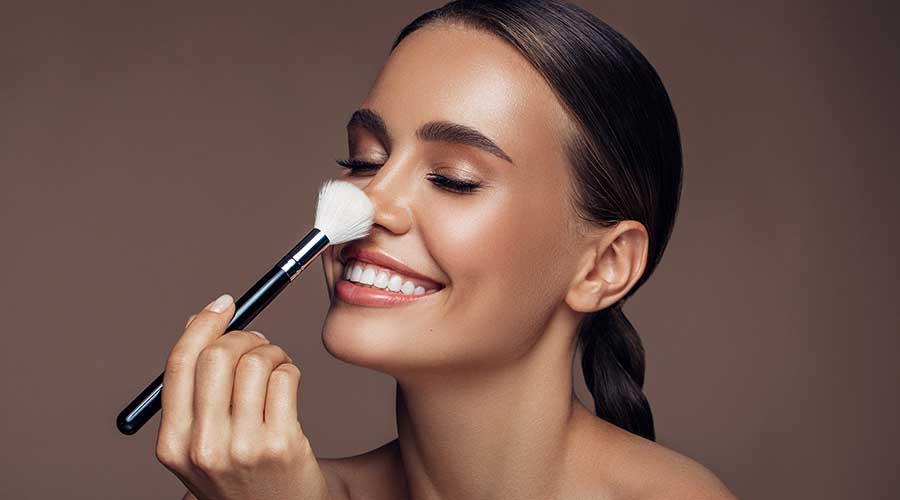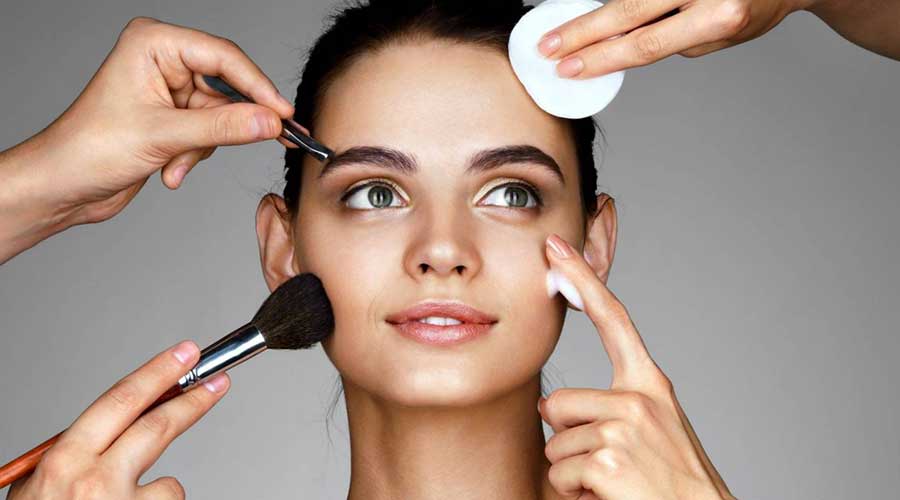NO BAD HAIR DAYS IN PARADISE! 13 BEST HAIRSTYLES FOR VACATION
- 27 Apr - 03 May, 2024

If shiny T-zones or under-eye creases are your main annoyance, allow us to introduce you to your new best friend: setting powder. And, along for the ride, powder brushes. Depending on the area you’re looking to cover, the size of this brush varies from small to large and typically has long, dense, fluffy bristles. It’s meant to ever-so-lightly “set” your liquid/cream foundations or buff and blend out powder foundations, depending on your needs.
How to use: Use the fluffy bristles to pick up a fine layer of loose powder (tap – don’t blow – off the excess first) and dust it over your T-zone and under your eyes. Load up the product to “bake” your makeup or use a light dusting to quickly set your foundation or concealer.
Bronzer, blush, and powder brushes are similar enough that one could do the job of many, yes, but who has the time to clean them between each step. Find a blush brush with long, fluffy bristles and a dome shape to evenly diffuse your powder pigments. The fluffier it is, the less product it will pick up.
How to use: When it comes to blush, the way you use the brush is almost more important than the brush itself. For bronzer, loosely sweep the brush in a “3” pattern, starting from your forehead, cutting across your cheekbones, then moving back out and down to your jawline. For blush, lightly swirl the product on the apples of your cheeks and blend it up into your cheekbones.

While using a brush for your liquid makeup is optional (you can opt for a sponge or your clean fingers instead), you absolutely do need to use some sort of application brush for your mineral makeup or powder foundation. Enter: the foundation brush.
These kinds of brushes are typically dense and can be pinched flat (like a paintbrush) or are full, rounded, and dome-shaped. While some people prefer synthetic bristles (which are easier to clean) for their liquid formulas, or even natural bristles – which are naturally more porous – for their powders, we’re all about synthetic bristles. Yes, really; the quality has improved vastly over the years and can easily be used for both.
How to use: For a perfectly smooth foundation application, start in the middle of your face (cheeks and T-zone) and apply your foundation outward in smooth, even strokes to prevent harsh makeup lines around the edges of your jawline and hairline. If you're using a mineral or powder foundation, swirl and buff the bristles to work the product into the skin.
Okay, despite the extra-sounding name, an eyeshadow shading brush is actually key for getting an opaque, even layer of colour on your lids. These brushes are typically flat, rounded at the tip, and dense so they can pick up a bunch of powder or cream for a concentrated colour payoff.
How to use: After rubbing the brush over the product, pat or press the eyeshadow onto your eyelids, gently swirling the brush around the edges to blend them out. You can also mist your brush with a setting spray first to deepen the opacity of a powder pigment or to better pick up glittery eyeshadow. Keep this on hand to get really sharp cut-crease eyes.
Eyeshadow crease brush
Unlike a shader brush, which essentially packs on the pigments to get your lids a ton of colour, an eyeshadow blending brush, well, blends out the powders for a really sheer, diffused finish – basically the smoke behind a smokey eye or the trick to a natural-looking shadow. These brushes are known for their tapered shape and soft, fluffy bristles to help you really blend, blend, and blend without scratching the hell out of your lids.
How to use: Swipe the fluffy bristles into the crease of your lids with a windshield-wiper motion to apply your eyeshadow for a diffused look, and swirl it around the edges of your eyes when transitioning between colours or blending multiple shades on top of one another.
COMMENTS